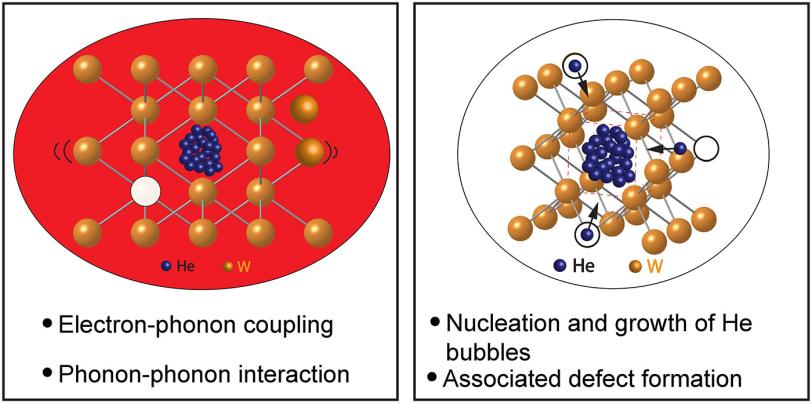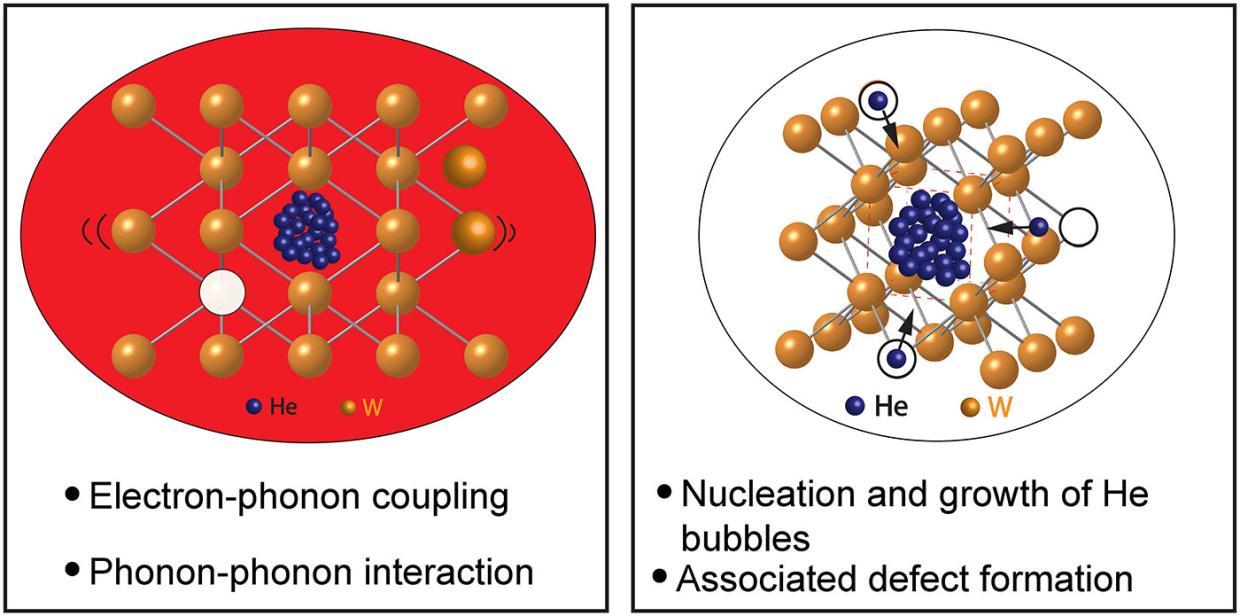HED - Stanford collaboration received DOE Mission Science award entitled: "Molecular Dynamics Simulations of Helium effects in Tungsten"
By HED
The National Energy Research Scientific Computing Center (NERSC) announced the DOE Mission Science Allocation Awards for Year 2021 and the proposal led by Dr. Mianzhen Mo from the High Energy Density Science Division at SLAC was awarded 3, 000, 000 processor hours.
This proposal will focus on using Density-Functional Perturbation Theory and Molecular Dynamics simulations to explore the impact of helium bubbles on the structural properties of tungsten, a plasma-facing material for the experimental fusion device ITER.

Cartoons illustrating the impact of Helium bubbles on tungsten material properties to be studied with this awarded allocation at NERSC. The results will be important to understand the degradation of fusion materials under extreme radiation environments.
According to Dr. Mo:
“The simulations will shed light into the atomistic behavior of tungsten with helium bubbles that are formed under fusion reactor conditions. In particular, we are interested in understanding how the He bubbles impact the phonon structure of tungsten as well as understanding the kinetics of the He bubbles at high temperature conditions. To test these simulation results, we have proposed similar experiments to the MeV-UED facility at SLAC. I am looking forward to learning how the virtual and real experiments compare with each other. ”
This work is part of the research project funded by a Laboratory Directed Research & Development grant that was awarded to Dr. Mianzhen Mo for FY21 and FY22.

